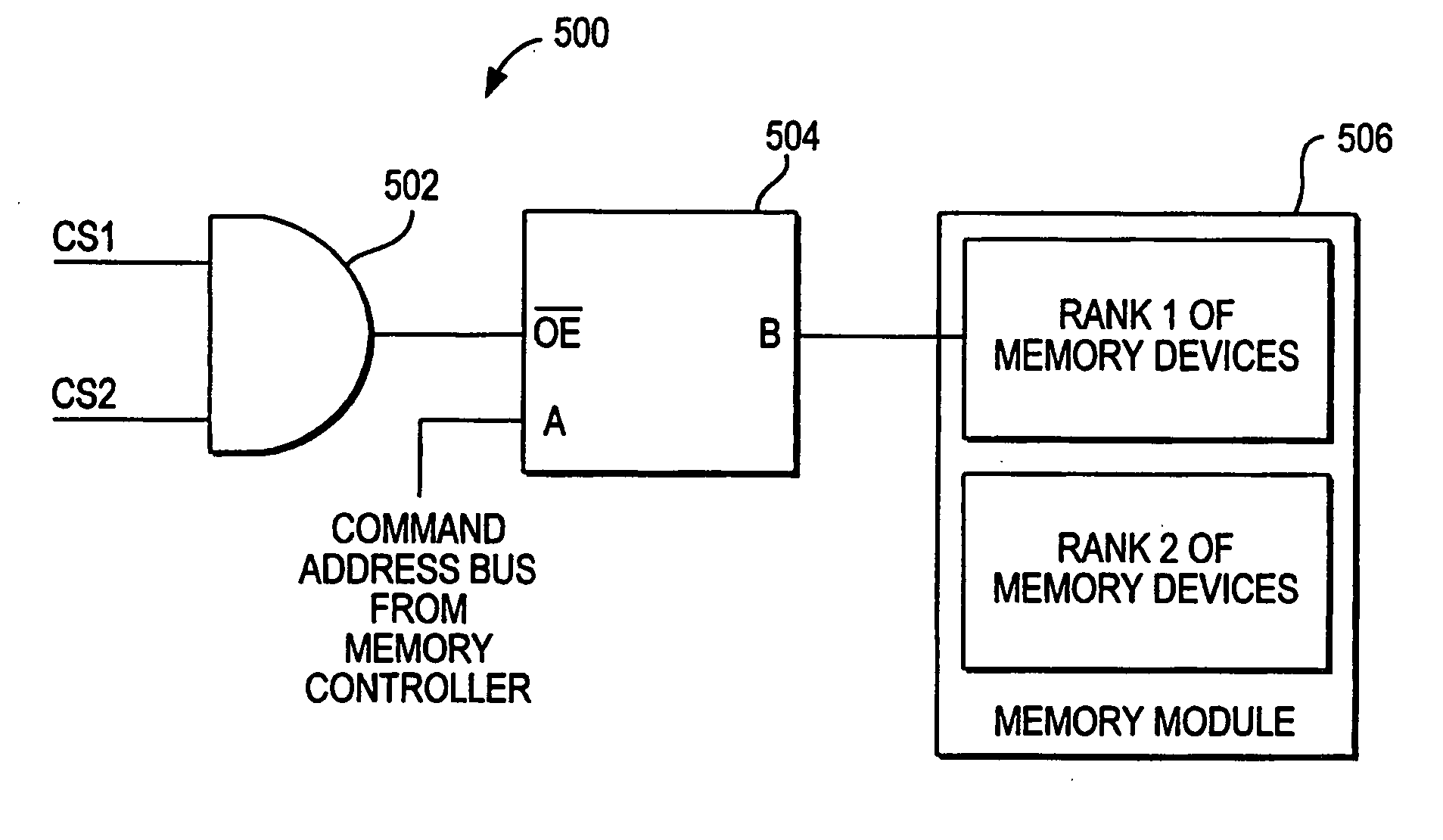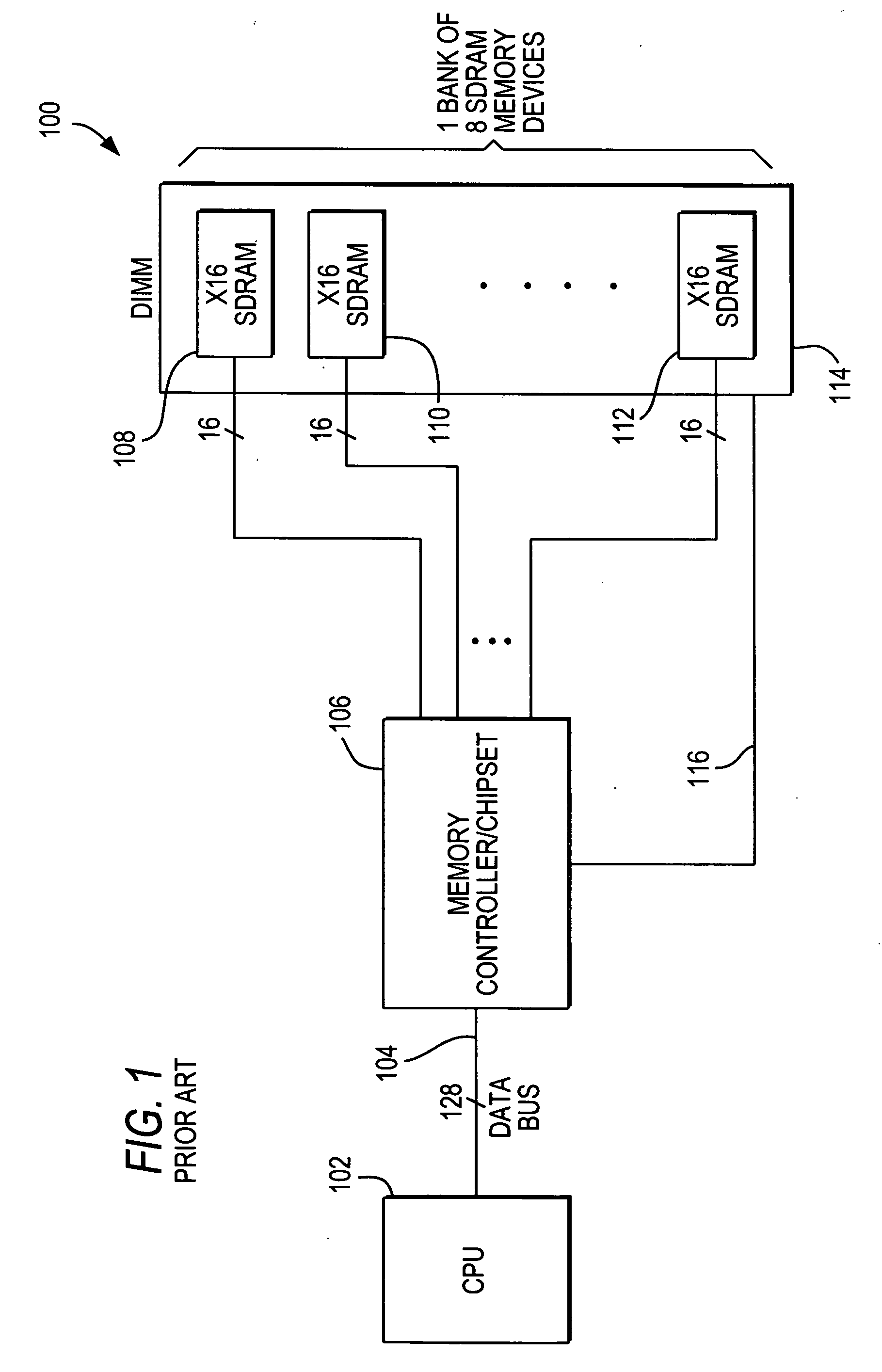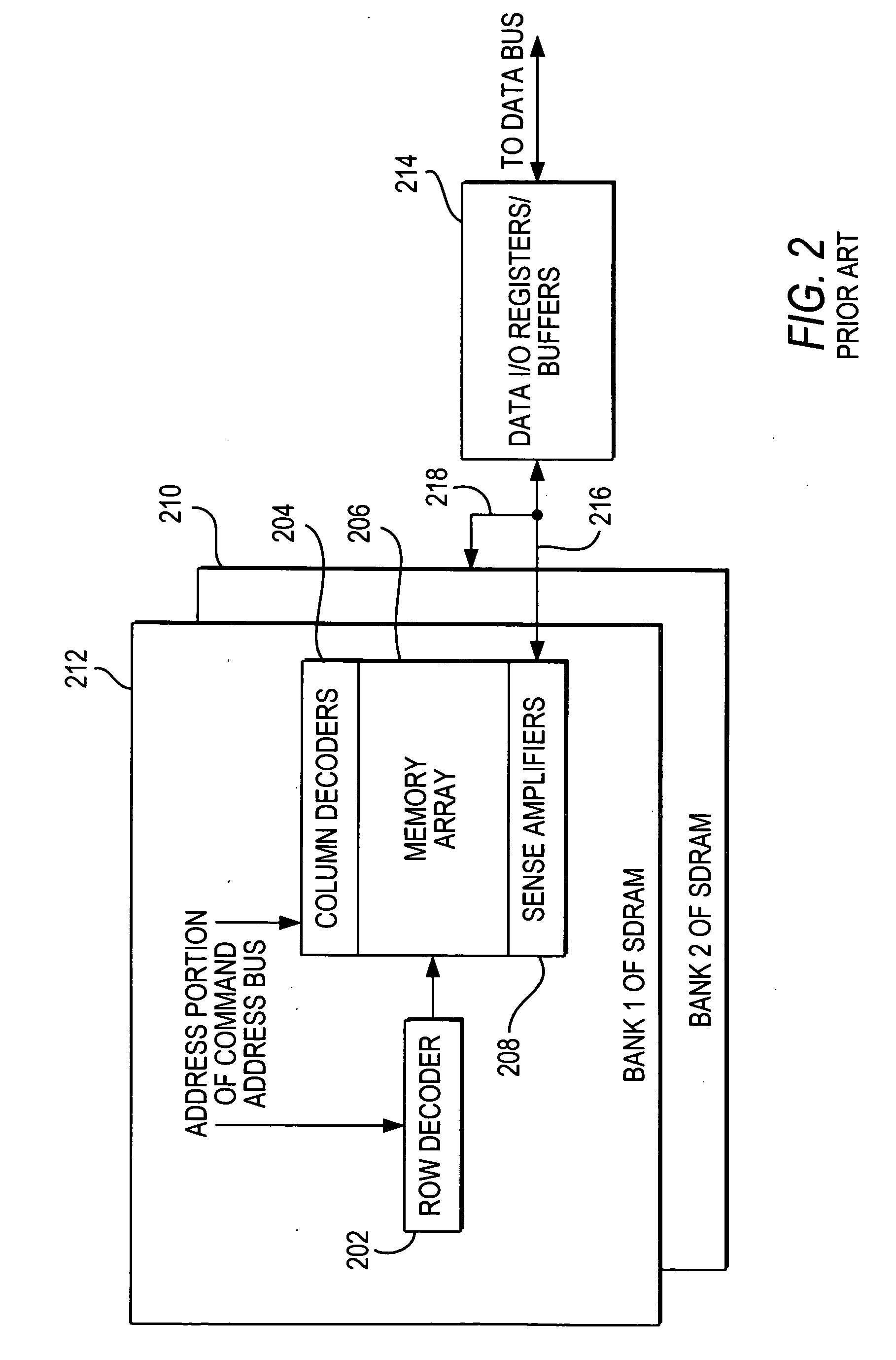Memory devices with buffered command address bus
a command address and memory device technology, applied in the direction of memory addressing/allocation/relocation, instruments, climate sustainability, etc., can solve the problems of dram-based memory device inefficiencies, unnecessary delay, delaying access, etc., to reduce the overflow of command address bus, reduce the number of memory modules and the number of ranks, and reduce the effect of command address bus bandwidth
- Summary
- Abstract
- Description
- Claims
- Application Information
AI Technical Summary
Benefits of technology
Problems solved by technology
Method used
Image
Examples
Embodiment Construction
[0024] SDRAM-based memory modules (including DDR (double data rate) SDRAM-based devices) and other types of memory modules that have multiple ranks advantageously can increase memory access throughput by having many activated internal banks and rows in each rank. Memory access schemes are known and can be developed that take advantage of this parallel activation of more than one rank of memory devices.
[0025] However, because a high number of ranks of memory devices can result in signal degradation on the command address bus shared between these ranks, the command address bus is advantageously connected to switches between the memory controller and the memory modules in accordance with the invention. The switches electrically isolate the command address bus from the ranks of memory devices. Each rank can be individually selected using a corresponding chip select signal, which also can be used to control the switches. Electrical overloading of the command address bus is reduced becau...
PUM
 Login to View More
Login to View More Abstract
Description
Claims
Application Information
 Login to View More
Login to View More - R&D
- Intellectual Property
- Life Sciences
- Materials
- Tech Scout
- Unparalleled Data Quality
- Higher Quality Content
- 60% Fewer Hallucinations
Browse by: Latest US Patents, China's latest patents, Technical Efficacy Thesaurus, Application Domain, Technology Topic, Popular Technical Reports.
© 2025 PatSnap. All rights reserved.Legal|Privacy policy|Modern Slavery Act Transparency Statement|Sitemap|About US| Contact US: help@patsnap.com



